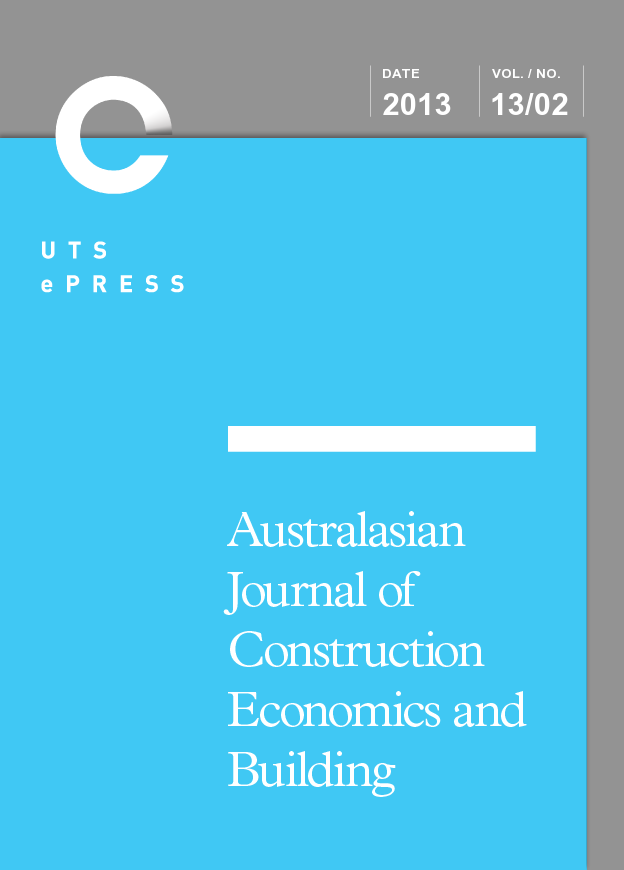A new approach for modelling variability in residential construction projects
Main Article Content
Abstract
The construction industry is plagued by long cycle times caused by variability in the supply chain. Variations or undesirable situations are the result of factors such as non-standard practices, work site accidents, inclement weather conditions and faults in design. This paper uses a new approach for modelling variability in construction by linking relative variability indicators to processes. Mass homebuilding sector was chosen as the scope of the analysis because data is readily available. Numerous simulation experiments were designed by varying size of capacity buffers in front of trade contractors, availability of trade contractors, and level of variability in homebuilding processes. The measurements were shown to lead to an accurate determination of relationships between these factors and production parameters. The variability indicator was found to dramatically affect the tangible performance measures such as home completion rates. This study provides for future analysis of the production homebuilding sector, which may lead to improvements in performance and a faster product delivery to homebuyers.
Article Details
Section
Authors who publish with this journal agree to the following terms:
a) Authors retain copyright and grant the journal right of first publication with the work simultaneously licensed under a Creative Commons Attribution License that allows others to share and adapt the work with an acknowledgement of the work's authorship and initial publication in this journal.
b) Authors are able to enter into separate, additional contractual arrangements for the non-exclusive distribution of the journal's published version of the work (e.g., post it to an institutional repository or publish it in a book), with an acknowledgement of its initial publication in this journal.
c) Authors are permitted and encouraged to post their work online (e.g., in institutional repositories or on their website) prior to and during the submission process, as it can lead to productive exchanges, as well as earlier and greater citation of published work (See The Open Access Citation Advantage Service). Where authors include such a work in an institutional repository or on their website (ie. a copy of a work which has been published in a UTS ePRESS journal, or a pre-print or post-print version of that work), we request that they include a statement that acknowledges the UTS ePRESS publication including the name of the journal, the volume number and a web-link to the journal item.
d) Authors should be aware that the Creative Commons Attribution (CC-BY) License permits readers to share (copy and redistribute the work in any medium or format) and adapt (remix, transform, and build upon the work) for any purpose, even commercially, provided they also give appropriate credit to the work, provide a link to the license, and indicate if changes were made. They may do these things in any reasonable manner, but not in any way that suggests you or your publisher endorses their use.
